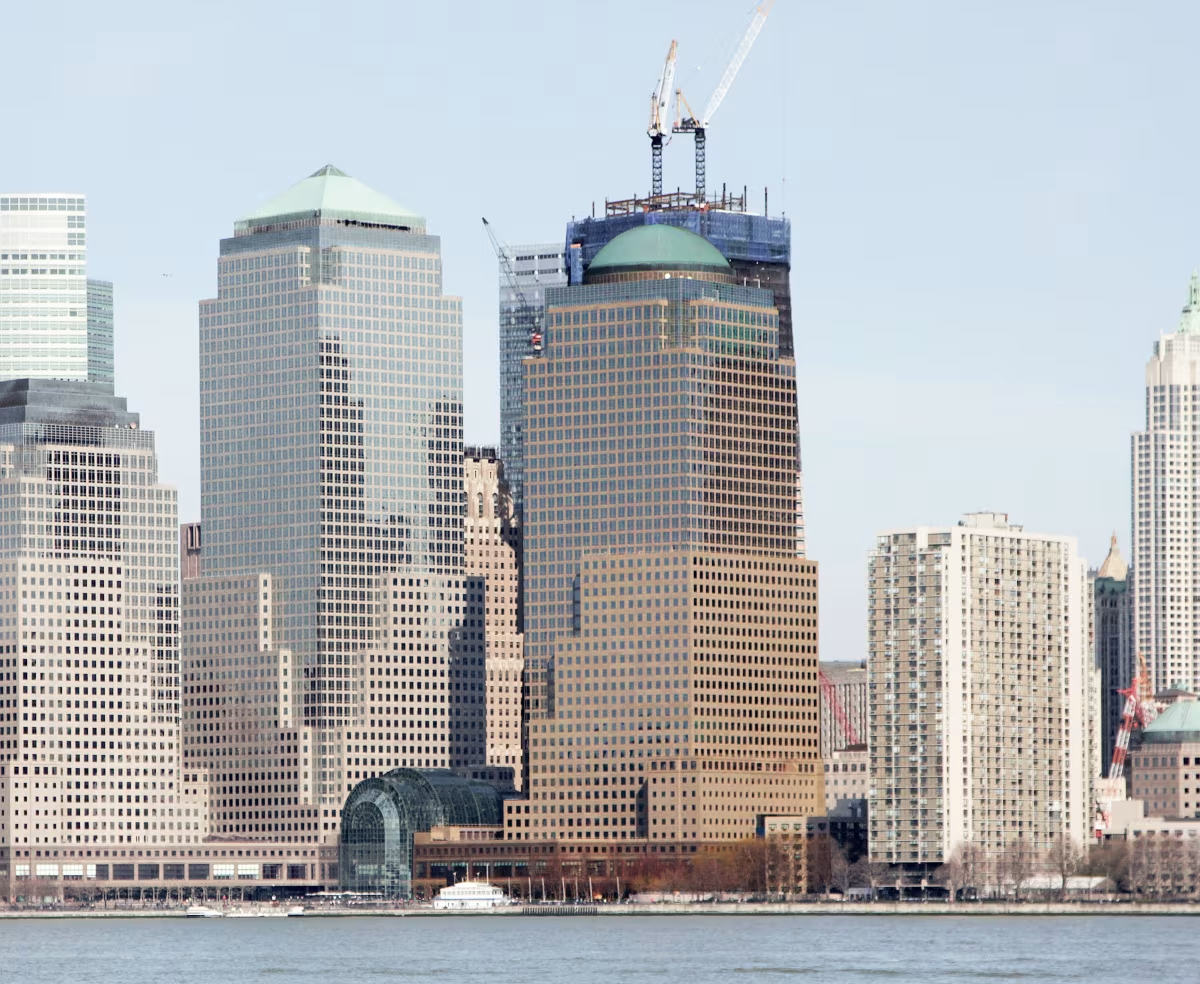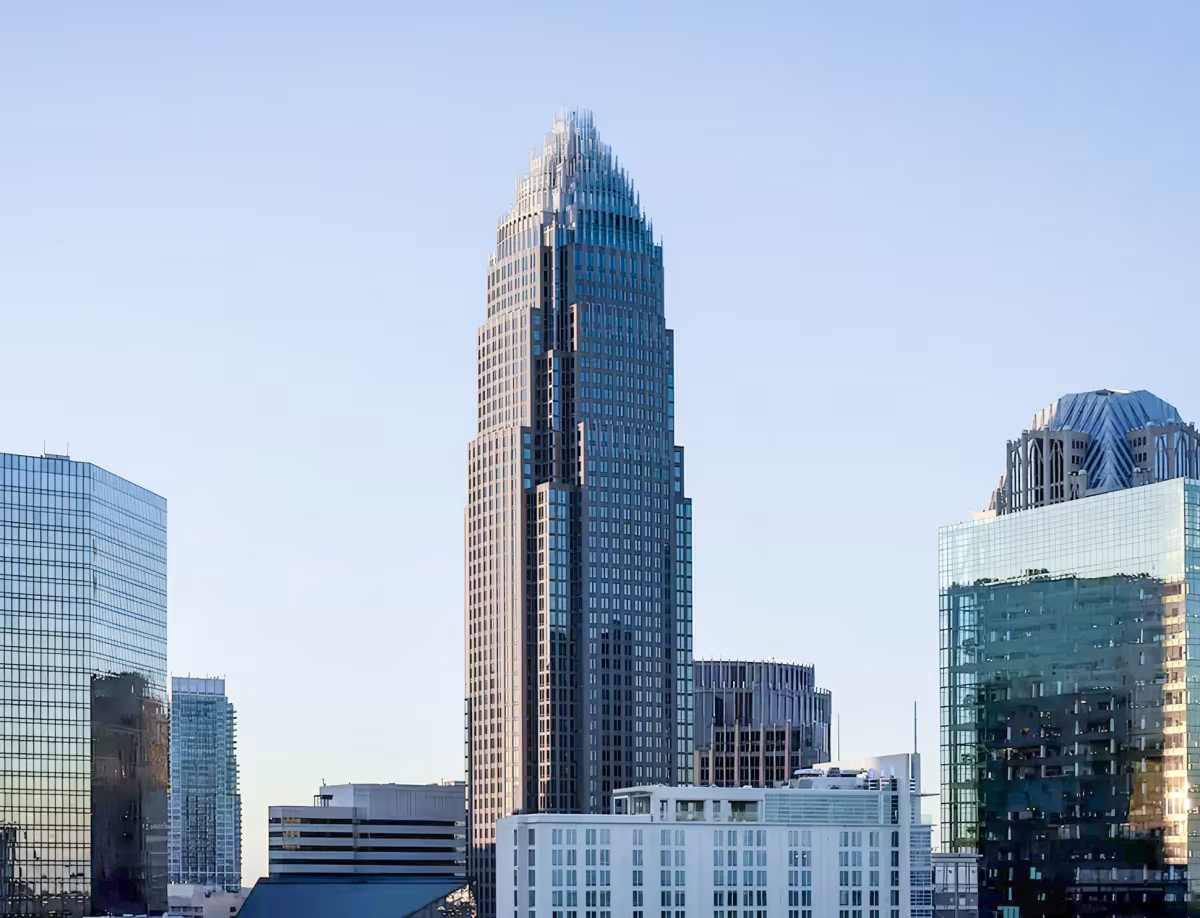225 Liberty Street Building vs Bank of America Corporate Center


Comparing the 225 Liberty Street Building and the Bank of America Corporate Center is an interesting exercise, because even though they are located in different cities (New York, NY and Charlotte, NC), both were designed by Cesar Pelli & Associates and finished within within 5 years of each other. This gives us the chance to see how the same architect's ideas were expressed in different urban contexts almost simultaneously.
Height & Size
The Bank of America Corporate Center is clearly the larger tower of the two, both in terms of height and number of floors. It rises to 869ft (265m) with 60 floors above ground, while the 225 Liberty Street Building reaches 646ft (197m) with 44 floors above ground.
Despite being taller and having more floors, Bank of America Corporate Center has less total built-up area than 225 Liberty Street Building.
Of course, each project may have faced different briefs or regulatory constraints, which we don't really know about and could also explain the outcome.
Architectural Style
Both the 225 Liberty Street Building and the Bank of America Corporate Center were designed in line with the aesthetic conventions of the Postmodernism style.
The Bank of America Corporate Center was designed at a moment when the Postmodernism style was already in decline, making it more of a lingering expression of the movement. In contrast, the 225 Liberty Street Building was built when the style still carried greater cultural weight.
Uses
Both the 225 Liberty Street Building and the Bank of America Corporate Center were designed to serve as commercial towers, and that has remained their main use since their completion, serving similar roles in the urban fabric.
Both towers provide significant parking capacity, with 225 Liberty Street Building offering 800 spaces and the Bank of America Corporate Center offering 1200.
Structure & Facade
The two towers rely on different structural systems, reflecting distinct engineering strategies.
The 225 Liberty Street Building uses a Frame structural system, which relies on a regular grid of columns and beams to sustain its weight, while the Bank of America Corporate Center uses a Framed Tube In Tube system, that combines a strong central core with a perimeter tube of columns.
Yet, when it comes to their facade, they both employed the same solution, a Curtain Wall facade.
A curtain wall is a non-load-bearing facade hung from the structural frame. It is anchored to floor slabs and transfers only its own weight and wind loads, allowing for sleek, glassy exteriors.
| 225 Liberty Street Building | Bank of America Corporate Center | |
|---|---|---|
| Cesar Pelli & Associates | Architect | César Pelli & Associates |
| 1985 | Construction Started | 1989 |
| 1987 | Year Completed | 1992 |
| Postmodernism | Architectural Style | Postmodernism |
| Commercial | Current Use | Commercial |
| 44 | Floors Above Ground | 60 |
| 197 m | Height (m) | 265 m |
| 247793 | Built-up Area (m²) | 155613 |
| Frame | Structure Type | Framed Tube In Tube |
| Steel | Vertical Structure Material | Reinforced Concrete |
| Concrete And Steel | Horizontal Structure Material | Reinforced Concrete |
| No | Facade Structural? | Yes |
| Granite, Glass, Aluminium | Main Facade Material | Granite, Glass |
| Brookfield Properties | Developer | Lincoln Properties Company |
| Thornton Tomasetti | Structural Engineer | Walter P. Moore |
| NY | State | NC |
| New York | City | Charlotte |
| 225 Liberty Street | Address | 100 North Tryon Street |